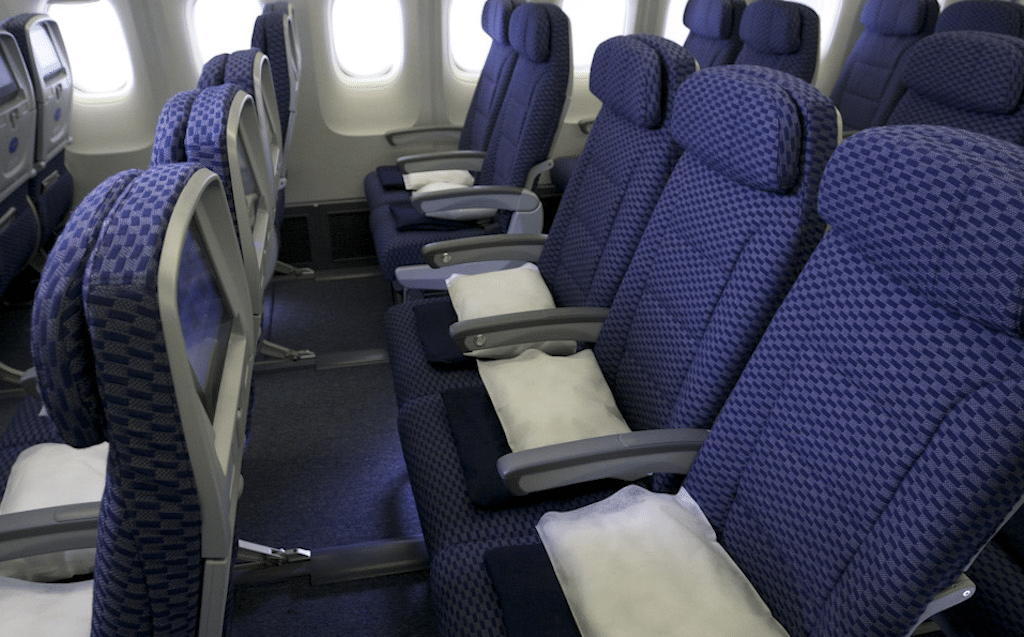United’s Seat Squeeze Equals 14 Additional Aircraft

Skift Take
Why order new aircraft when you can cram in additional, thinner seats?
During United’s fourth quarter earnings call today, Jim Compton, United’s chief revenue officer, said the airline has installed slim-line seats on 300 aircraft, making the project begun in 2013, 85 percent complete. When the installations are finished by the end of 2015 they will be the equivalent of adding 14 aircraft, he added.
United, Delta, JetBlue, Southwest and American are all adding slim-line seats to squeeze more revenue out of each aircraft by increasing the number of seats, coaxing additional ancillary revenue, and enhancing fuel efficiencies.
“Each row of coach seats used to have 32 or 33 inches of space front to back for a seated passenger between seat backs — a measurement the airline industry calls seat pitch. But now many big airlines are down to 31 inches of seat pitch,” writes Scott McCartney of the Wall Street Journal. “United goes as tight as 30 inches on some of its Boeing 737s.”
Although United believes the slim-line seat installations translate into 14 additional aircraft, it still, of course, plans on adding to its 700 aircraft mainline fleet. On tap for delivery this year are 34 Boeing jets, including , 787-9s and the 737-900ERs.
On the regional front, United is also taking delivery of 49 new Embraer 175 aircraft for United Express. Those 76-seat Embraer 175s are largely replacing 50-seaters, and the switch meant a 15 percent gain in ancillary revenue per aircraft because of the added United First and United Economy Plus seats, Compton said.
Like Delta, United doesn’t plan on lowering fares because of the steep drop in jet fuel prices but instead is looking to use the windfall to reduce debt and accelerate its share buyback program while maintaining capacity discipline, which is the holy grail of U.S. carriers.





